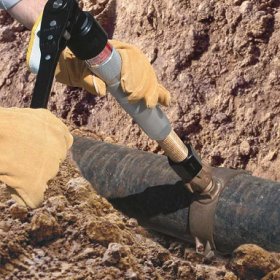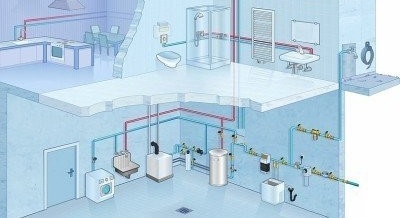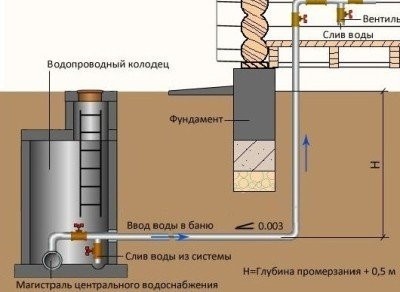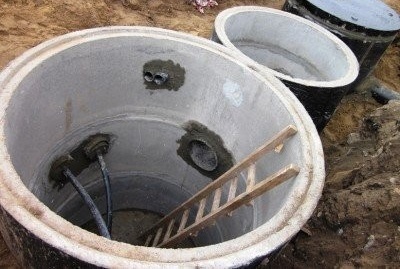Technology for tapping into an existing water supply system under pressure

The construction of an individual house includes, among other things, the organization of a water supply system. The best option is to connect to an existing water supply passing near the house. This method looks advantageous from a financial and sanitary point of view before an autonomous water supply. Although there are certain features of such a connection: a tie-in into the water supply system is necessary with the existing central highway. Here, even a layman understands that the disconnection of other consumers powered from it must be avoided. There are many ways to connect the consumer’s foot to the existing highway, we want to talk about the most understandable, so to speak, classic version.
Using a well as a tie-in node
Connection can be made either using an existing well, or building a new one. Its diameter should not be less than 0.7 m. The “newly made” structure is dug up near the house and is covered with brick or reinforced concrete. If the underground groundwater level exceeds one meter, it is best to purchase a waterproof plastic well.
An insert is made from it into the existing water supply system and a shut-off valve (valve or valve) is mounted. Here, in the well, at the point of connection with the external water conduit, the water pipe insert assembly is located. Functionally, it serves to disable input during repair work. On top of the structure is covered with a plate with a hole for the hatch.
Attention! Before starting work, it is necessary to obtain the technical conditions and permission of the local water utility, as well as to notify local authorities of the date of the work, especially if they are carried out in a pedestrian zone or highway.
Detailed description of the key stages of work
Before making an insert into the water supply, determine the route of pipe laying. They should be located at an optimum depth of 1.2 m in a straight line “central highway - house” and be polyethylene, cast-iron bell-shaped or galvanized steel. The polymer version is preferable, because does not require a tie-in for welding. The trench is dug manually or by an excavator to the required depth. It should be larger than the freezing line of the soil in this area, but not less than 1 meter.

Thus, a full-fledged water supply system of a private house looks like, powered by a central highway; it is important to combine it with other communications
Important! Before starting work, it is necessary to find out what other communications pass at this depth so as not to damage them.
- For insertion, a special overlay is used in the clamp. It is installed on a cleaned flat place of the pipe.Metal parts are cleaned with sandpaper, and rust and paint are removed.
- At the other end of the lining, a valve with a sleeve is installed, where the drill is located.
- After drilling the line, the drill and sleeve are removed, and the valve is simultaneously closed.
- The inlet pipe is connected to the flange on the valve.
- It is imperative to provide for a 2% slope in the section of the route from the tie-in to the entrance of the outlet pipe under the foundation towards the main pipeline.
- The correct location of the water meter that records the amount of incoming water assumes that the shut-off valves are: one in front of it, the other after the meter. The meter for water flow can be located both in the well and can be taken out into the room. The shut-off valve turns off and turns on its flow.
Final chords: check valve, tests, adjustment
To protect the meter from the reverse fluid flow, a check valve is required. In the case when the insertion into the water supply system under pressure involves the passage of the input through the wall, it is necessary to provide a space of 0.2 m (clearance) in the structure, which is sealed with a resin strand or waterproof glands. Then the cement seals close these seals.
Correct connection of all elements is checked by tests. To do this, pressure is supplied, and through the tap at the other end of the inlet, air that fills the system is vented. Since the insertion into the main water supply involves the impact of 6 working atmospheres, traces of leakage in the joints should be monitored with the trench still not filled.
Attention! In the case of installing a larger number of inlets, which depends on the water supply schedule for different consumers, where the water supply should be around the clock, they are combined. The water flow is regulated by a valve.
This method can be used in any weather conditions, and, most importantly, without stopping the water supply for subscribers. But working with a pipeline under pressure requires strict implementation of all operations and compliance with safety regulations.
But you don’t need to do that!
Anything can happen. If you disrupt the technology of work, something like this may come out:




